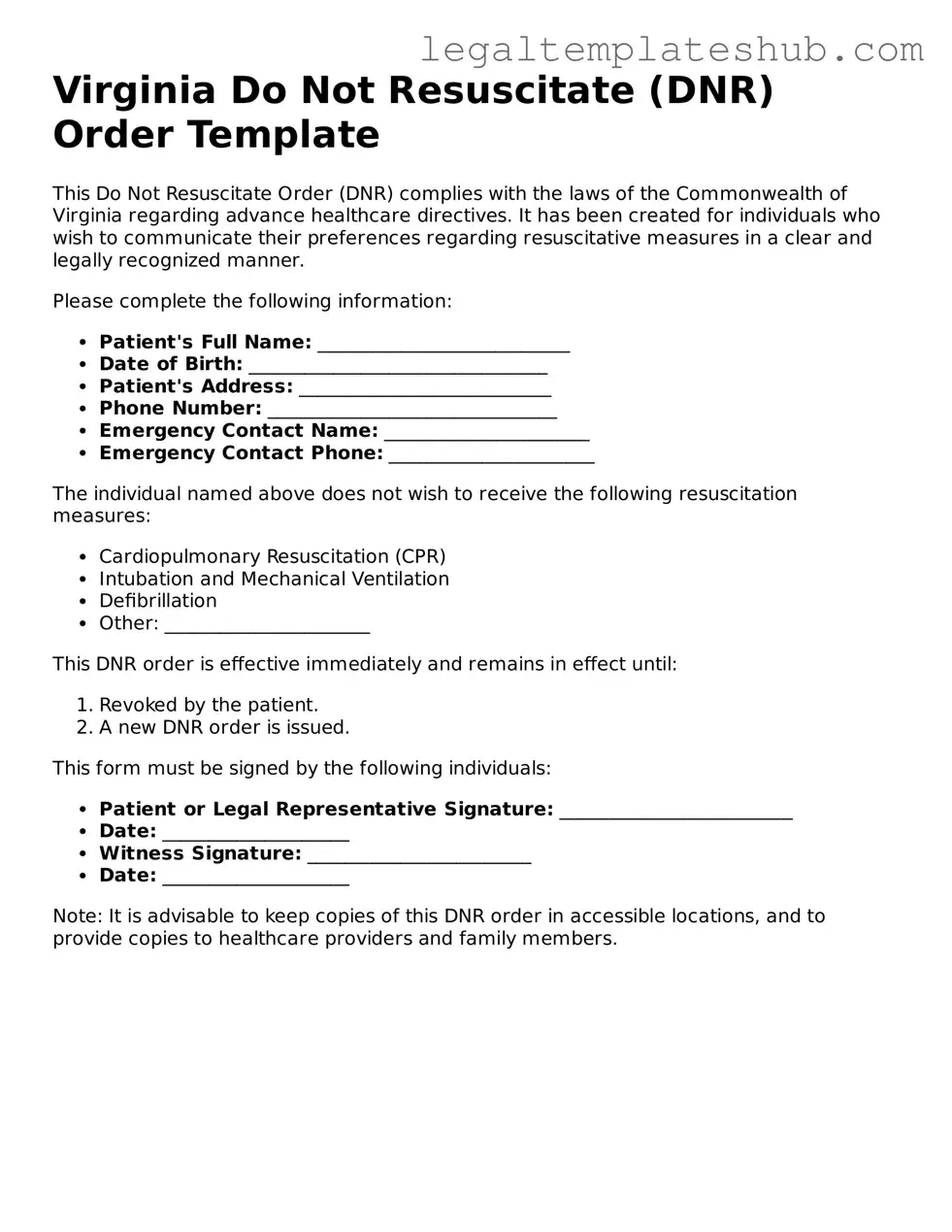Printable Do Not Resuscitate Order Document for Virginia
A Virginia Do Not Resuscitate (DNR) Order form is a legal document that allows individuals to express their wishes regarding resuscitation efforts in the event of a medical emergency. This form ensures that medical personnel respect a patient's decision not to receive life-saving treatments. Understanding how to properly fill out this form is crucial for anyone considering their end-of-life care options.
Take the first step in ensuring your healthcare wishes are honored by filling out the Virginia DNR Order form. Click the button below to get started.
Access Editor
